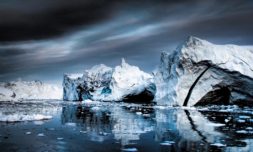The South American nation was home to six glaciers in the Sierra Nevada de Mérida mountain range, five of which have disappeared within the last century. Its only remaining one, known as La Corona, has now shrunk so much due to climate change that scientists have reclassified it as an ice field.
Venezuela’s single remaining glacier, known as La Corona, has shrunk so much that scientists have reclassified it as an ice field.
This makes the South American nation the first country in modern history to reach this grim milestone.
According to The International Cryosphere Climate Initiative (ICCI), at least five others have disappeared within the last century – Venezuela lost 98 per cent of its glacial area between 1952 and 2019 – due to climate change driving up temperatures in the Sierra Nevada de Mérida mountain range, which lies 5,000m above sea level.
La Corona was projected to survive at least another decade, but monitoring the site in recent years has been no easy feat amid political turmoil and a humanitarian crisis unlike anything ever witnessed by the continent.
As a result, assessments have only just been able to uncover that it melted much faster than expected, and has shrunk from more than 450 hectares to less than 2.
While there’s no global standard for the minimum size a body of ice must be to qualify as a glacier, the US Geological Survey says a commonly accepted guideline is around 10 hectares.
#Venezuela has officially lost its last glacier after La Corona glacier on Humboldt peak, 4,900 meters above sea level, became too small to be classed as a #glacier.
This makes Venezuela the first country in the Andes mountain range to lose all its glaciers. https://t.co/BJyqouUjMY
— International Cryosphere Climate Initiative (@ICCInet) May 6, 2024
For this reason, La Corona is now too small, and has been downgraded from glacier to ice field.
‘In Venezuela there are no more glaciers,’ Professor Julio Cesar Centeno from the University of the Andes (ULA) told AFP. ‘What we have is a piece of ice that is 0.4 per cent of its original size.’
This didn’t take place without intervention, however.




















